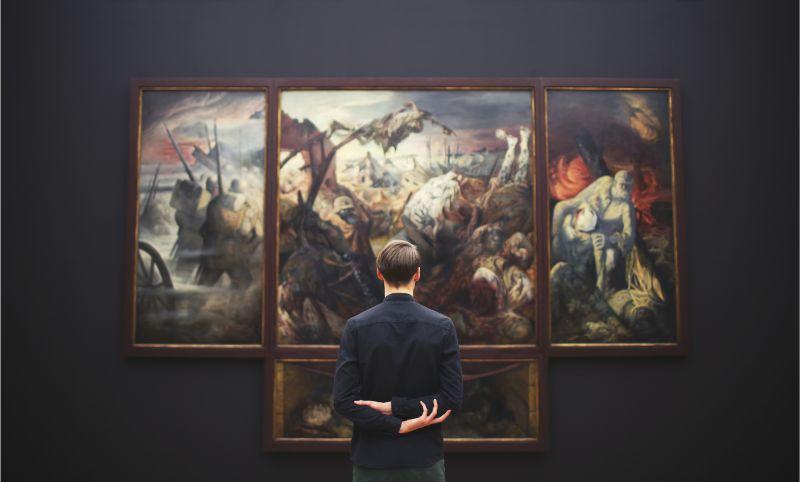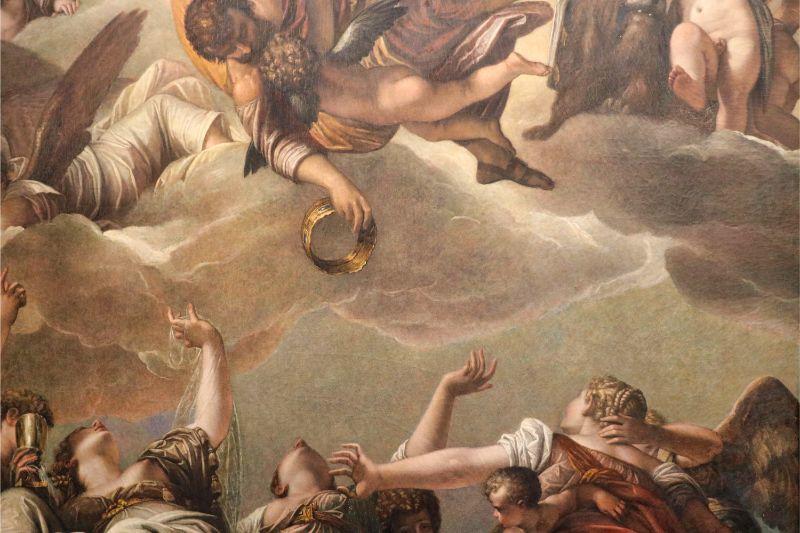Have you heard about the Baroque Cultural Movement?
If you haven't, we need to revisit 1530 when religious tensions were rife. Society was being changed as religious leaders from the protestant and the Catholic faiths were rather whole heartedly challenging the Catholic church. During this time, the Protestant religion grew in popularity and the Catholic Church needed to regain its dominance. In attempting to regain this religious dominance that the Catholic church so deeply craved; a reform movement was born. This movement was called Baroque.
The Baroque movement mainly established by the Catholic church in Rome soon spread throughout Europe. The art movement wasn't advocated by artists but rather by religious leaders and patrons.
Most of the art produced during the Baroque era was art that was rich, pompous, vibrant and rather extravagant. The subject of most of the artworks produced was Biblical scenes and other religious artefacts. The freedom of the Baroque artists was restricted as they had to adhere to rules provided by the Catholic reform council.
Many artists to date argue that this popular art form from the late 1500s to early 1700s showcased work that showed confidence and truth.
Since the Baroque Art Movement was known as the counter-reform art movement, not much focus is paid to this movement. However, as an art student, you need to pay attention to it. In fact, the study of paintings by Baroque artists showed the direct emotional appeal made by the Catholic church. While paintings captured mythical figures, many non-religious truths were also evident in the artwork produced during this era.


Core Characteristics of Baroque Art
- The Art Movement was a direct plea from the Catholic church to bring back Catholic worship. Although many famous painters argued that tons of non-religious aspects were captured in the artwork as well.
- This type of artwork dominated much of the 17th century and a look at paintings painted during this era may indeed be a realistic depiction.
- Paintings painted during the Baroque Art Movement simplified the message of the Catholic church and made it easier to understand the pull of the Catholic church. The paintings still made it evident why Catholic worship needed to be valued and respected.
- Light was a technique used to illuminate space and so the movement's art reflected buildings that still had open spaces.
- Another technique used was that of the intermesh of light and dark technique that was used to increase the dramatic effect of these type of paintings.
- The movement also became a well-known art movement that gave birth to a new style of sculpture that was characterised by deep emotion and intense richness.
- The movement was such that it was as if the viewers of the paintings were looking at the scene as it was happening.
- The composition of the painters was meant to enhance the dramatic effect of the paintings while erasing the invisible lines between art, reality, and spirituality.
If you are keen on finding out more about this particular art movement, you need to consider reaching out to a Superprof art tutor. It is important to learn about the different art movements that existed since the earliest of times. If you are considering learning about another movement that was somewhat of a protest art movement, we suggest you read more about the impressionist art movement.

Baroque Art Period
Spreading from Italy to the rest of Europe between the 17th and early 18th century, the Baroque Art Period became most significant. However, it is important to remember that as the art movement travelled from Italy to France to Africa and eventually Asia, the type of art changed as well. Artists in different countries adapted the Baroque Art Movement to align with their own local styles and the materials that they had.
In 1756 and 1766, Jewish priests designed pavilions that had been based upon the Baroque Art Movement. Apparent in these pavilions was elements of grandeur and splendor.
The depiction of humans in Baroque paintings were meant to enforce an added sense of drama and became more common during the latter part of the 17th century.
From paintings to architecture, Baroque architecture was known to break free from classical architectural pieces. The architecture created during this movement had been both dramatic as well as dynamic.
The peak years of Baroque paintings also saw the creation of objects that drew inspiration from the Baroque movement and that focused predominantly on creating pieces from precious materials.
Remember to travel through time looking carefully at the Baroque paintings and sculptures that set the tone for this global movement.

Looking at Baroque Artwork
To understand the Baroque artwork produced, we must explore some core artist who promoted this movement.
Baroque Artists of Note
Rembrandt
Rembrandt Harmenszoon van Rijn was born in the Netherlands. With supportive parents and very humble beginners, Rembrandt became interested in arts. Rembrandt left school in order to become an apprentice with a few local artists. Rembrandt opened his own art studio and found his passion once doing so.
Quite the master artist, Rembrandt's work will always be remembered.
Top Artworks: The night watch, the Jewish bride, the return of the prodigal son
Birthplace: Netherlands
Lifeline: 1606 - 1669
Art Style: Baroque
Art Forms: Painting and Printmaking
Vermeer
Johannes Vermeer was considered to be the self-taught artist. It was based on the influence of the work of Caravaggio and the depth of Rembrandt's painting that inspired Vermeer's painting.
Vermeer created artwork that was filled with bright colour, vibrancy, and work that had looked as realistic as possible.
Top Artworks: Girl with a pearl earring, the art of painting, the milkmaid, Diana and her nymphs
Birthplace: Netherlands
Lifeline: 1632 - 1675
Art Style: Baroque
Art Forms: Painting

Exploring Baroque Paintings
David with the Head of Goliath
David with the Head of Goliath was a Baroque picture that captured the core essence of the art movement. The picture was painted by artist Caravaggio after he himself had been expelled from Rome for killing a man during a tennis match.
The painting is said to be dramatic and dynamic, yet it is also seen as a psychological mirror that captures the esssence of Caravaggio's own psychological state.
Artist: Caravaggio
Date Painted: 1609-1610
Size: 125 x 101 cm
Medium: Oil painting
Supper at Emmaus
The Supper at Emmaus was another work of art painted in 160 by artist Caravaggio. It is a painting that seeks to tell the story of Christ that has been crucified. In the painting it seems that Christ's disciples were walking along the road only to be joined by another man. They all sit down to eat alongside the man who joined them. When this man breaks the bread at the supper, it is revealed that the man is Christ who has been resurrected. The painting captures a moment of intense passion and even surprise to a certain extent.
Artist: Caravaggio
Date Painted: 1601
Size: 55 x 77 inches
Medium: Oil on canvas
The Lamentation of Christ
Since the Baroque Movement dealt mainly with religion, this Lamentation of Christ painting speaks volumes about the Christian belief of mourning and grief. The picture has been painted by Annibale Carracci and depicts three Mary's- Virgin Mary, Mary Magdalene, and one other Mary.
The picture shows the lamentation of the dead body of Christ and captures the sheer grief during this scene.
Artist: Annibale Carracci
Date Painted: 1604
Size: 59 x 48 inches
Medium: Oil based painting
Famous Baroque Artists and Their Work
- Artemesia Gentileschi- Judith Slaying Holofernes
- Francisco De Zurbaran- The Martyrdom of Saint Serapion
- Georges De La Tour- The Penitent Magdalene
- Peter Paul Rubens- The garden of love
- Rembrandt- The girl at a window
- Caravaggio- Bacchus
- Peter Paul Rubens- Judgement of Paris
- Caravaggio- The calling of St Matthew
- David Victorious over Goliath by Caravaggio
- Georges de La Tour- Mary Magdalen with the smoking flame
It is in paintings like that of Peter Paul Rubens that the true artistic style of Baroque paintings can be discovered. In the 1618 painting entitled, "Rape of the Daughters of Leucippus," it is clear that artists were allowed to deviate from certain norms of traditional Baroque paintings. Rubens refused to rely on the interplay between light and darkness to create the drama but fell prey to the technique of using vibrant colour and movement in this painting to create drama. The bodies of subjects used in his paintings (particularly in this painting) had their bodies twisted almost as if to depict the idea of chaos.
Reuben's paintings are but one type of Baroque painting style that you can analyse. Should you study art, the work of Rembrant and Caravaggio becomes equally as important.
Again, like all artistic movements that came to the fore, the Baroque Art Movement produced pieces that captured the reality of an era where the struggle for religious dominance was apparent. The religious tension that defined this artistic movement is as evident as the personal religious tension that is expressed in William Blake's poem, "Garden of Love."
While religious art may not be your forte, you have to admit that paintings created during this era depicted sheer perfection and were immaculate in capturing raw emotion, while this communicating the message to consider the way in which you view things-religion included.
If you are keen on studying art, remember you need to pay attention to everything including the interplay of light and darkness in Baroque paintings and how similar the brush strokes were during the impressionism and the expressionism art movements.
If you need somewhat of a break from all the religious conflicts expressed in the Baroque painting era, consider how commercialism or pop culture was captured during the pop art era.
Also, talk to your art tutor to find out which art movement he or she preferred, Feel free to comment on which art movement you personally like. Through your private lessons, you might discover a passion for surrealism or even cubism.
Before you even splash paint on your blank canvas with your paint brush, know which artist style you would like to follow. Then go ahead and make your mark or create a whole new painting era.















